万字长文,从不同的维度谈游戏的故事设定和意义,下篇
篇目1,电子游戏故事的核心是情境而非情节
作者:Mark Filipowich
有个教授曾跟我说,如果想要创造一个可称得上是故事的故事,它就必须包含能受事件影响而改变的角色。故事必须具有不同层面,并利用丰富的文学手法和修辞,但最重要的还是故事中的事件必须能够改变角色。
将一个醉鬼与他那死去的母亲放置在救护车上,或让一个流氓AI在一所由God运行的律师事务所工作,或让一个失去记忆的工程师待在一间闹鬼的三明治店等,都不足以说是故事,它们只能说是种种情境。也许这是一些有趣的人在有趣的情境中思考并说着一些有趣的事,但也只能说是情境而已。
这位教授告诉我们,情境并不等于故事。故事中必须发生某些事件,并且其中的任务会因为这些事件而发生改变。在不同的个体和他们所面对的特定情境间,故事具有透明的行动。
当然了,与大多数文学规则一样,在经过仔细检查后这些规则也会出现崩溃。在卡夫卡的作品中,任务并不会随着情节的发展发生改变;甚至连海明威也更注重自己的思考,而不是描绘出角色身上所发生的一切,以及为何会发生这些事。
但是我认为这个教授只是想将一个复杂的世界变成一些容易管理的组块,帮助学生们更好地理解。即使“被事件改变的角色”标准还不甚完善,但却能帮我们更好地理解文学功能。不过从另外一方面看来,游戏并不符合这一标准。

Storytelling(from cpcc.edu)
游戏叙事并不是建立在故事上。甚至连基于情节的游戏也不是关于事件,时间和人物,而是注重事件周围的任何事物。促成情节发展的任何情境比情节本身更有趣。如果说文学是一个生长箱,孕育着会受各种刺激影响的角色,那么游戏便是一个覆盖着各种线索的开放式房间,充满了各种迷人的角色,并且吸引着更多陌生人前来探索。
就像Nick Dinicola所说的,这不只是关于世界的创造比情节创造更重要,玩家也不需要对情节中的运动创造负责(游戏邦注:尽管它们对于游戏中的叙述仍是必不可少的元素),在电子游戏叙述中,游戏情境(而非情节)才是真正的基础。我认为叙述是情节,世界,角色,场景,环境,设置,对话交流以及任何能够影响玩家感觉或想法的机制系统的总和。
虽然我们也不能忽视游戏中所有优秀的写作作品,但不管怎么说所有内容都是基于核心情境。玩家偶然进入了开始的环境,并通过探索,推断与游戏而经历各种变化。甚至当玩家不能控制游戏的任何事件时,叙述的核心也是基于游戏所创造的各种新氛围。不管是从Brecilian Forest过度到无底之路,从疣猪身上跳下而遇到女妖,或者排队去清理俄罗斯方块,每一种氛围豆浆围绕着游戏情境散发出来。
让我们想想大多数关卡是如何开始的:一开始都会出现一个过场动画或简短的介绍引出一个新的屏幕,但最终游戏世界中都会出现一个角色,并让玩家开始进行探索——即使只是朝着同一个方向。
甚至在冒险游戏中——即玩家需要想出如何从一个对话或过场动画前进到下一个场景,游戏叙述是基于玩家移动他们的角色或屏幕,或者只是检查游戏世界中的某些元素,直到最终解决了每个谜题。在玩家经过探索而真正理解游戏环境前,游戏中并不会发生任何变化。在小说中,我们看不到角色是如何进入一个房间,并靠近每个新房间中的每件家具以搞清楚它们的功效以及为何会摆放在那里(游戏邦注:除非是美国小说家和批评家Henry James的小说)。
不管是“1-1 MARIO START”还是最具动态性的过场动画都只是创造了游戏环境,即将角色放置在一个开放领域,将控制交给玩家,然后留下一些尚未解决的问题。即使情节并不受玩家输入内容的影响,但是当玩家在探索情境时,大多数叙述实体(包括图像,音乐,角色设计,从A点到B点所需要的努力,个人和数据的发展,角色的改变等)都会发生改变。
这也是游戏为何从不,也不应该做得绝对逼真的主要原因。因为不管是让英雄花费20分钟的时间远离一个主线任务(因为他们认为自己已经看到海岸线上的鲨鱼),让人们在每次提示时都重复相同的话语,让敌人以相同的模式行走或进攻,或者让死人再次复苏等都不是什么自然的设置,它们能够推动玩家对于游戏情境的探索,而这正好是电子游戏故事叙述的核心。
.jpg)
League_of_Legends(from mmogamer)
游戏中的情节之所以不是很重要是因为在玩家影响情节前它并不存在。但是情境就不同了,它一直都存在于游戏中,并且在最优秀的游戏中,情节始终都保持着乐趣。甚至在像《马里奥》等完全不存在故事的游戏,或者像《魔兽世界》以及《英雄联盟》等不重视故事的游戏中,情境更是能够影响玩家的思维与感受。
不管是玩家因为被敌人所超越而感到绝望,并最终谨慎地选择了战斗位置或引诱敌人发动进攻,还是他们探索游戏环境的最终结果是逆转的胜利或者羞耻的失败,真正的要点在于所有的情感和理性体验都是受到游戏所创造的情境的影响。
大多数玩家之所以不能完成游戏并不是因为游戏太过复杂或者他们对游戏感到了厌烦,而是游戏呈现出了冗长且让人厌烦的情境,从而失去了对于玩家的影响。问题在于游戏在最后只留下少量未经探索的场景,少量长期目标,以及少量无决断力的角色。角色所迈出的步伐越大,游戏情境就变得越发紧缩。
从根本上来看,游戏也未提供给玩家足够的开放“空间”进行探索。有多少玩家在遇到最终boss前就选择退出一款长达40个小时的游戏?在最终地牢打开并且所有支线任务都结束时,玩家不再需要通过探索去掌握仅剩的那个情境,那便是:“我需要打败boss,或者我将不断重置,直到我能击败他并获得‘最好的’结果。”
对于文学和电影来说,情节便是一切。如果不能移动事件去塑造角色,那便只剩下没有方向的设置。我们融入这些故事去观察人们将做什么以及会发生什么事去塑造这些角色。但是在游戏中,设置才是核心。他们创造了一个空间让玩家可以在此游荡,并寻找自我。而玩家可以通过自己在游戏中的经历而理解之后发生的所有故事。
篇目2,分析游戏中的讲故事机制
在听到故事这一词时,大多数人都会认为是一连串相连接的事件。例如:“公主被绑架了;勇敢的骑士骑着马去拯救她;骑士面前出现了一条巨龙,骑士杀掉了巨龙并拯救了公主;最后骑士获得了半个王国并娶到了公主。”也许也有人会想到一些较小的细节内容,如公主是如何被绑架的,骑士是如何对抗巨龙等等。
.jpg)
CampFire(from blogspot)
这并不是联想故事的正确方式。情节是事件间的纽带,它是为了将故事更好地传达给观众。而故事的真正核心则是主题,地点,情感等等。我们所听过的所有故事都是基于情节,但这是因为我们只能通过这种方式进行阐述。而既然我们已经拥有电子游戏这一普遍的媒介,这种方法便不再奏效。然而很多人仍坚守着故事等同于情节的理念。此外还存在一个非常普遍的理念,即当游戏越发脱离线性化,它也就逐渐脱离故事。我并不赞同这一看法,如果我们想要推动媒介的故事性,这种观点就需要发生改变。
营火边的故事
很早以前人们就听过各种故事,甚至是在文明诞生以前。这些故事并未被记录下来,但却一直被人们反复传播着,并且还是基于各种不同的方式。这种“营火边的故事”仍然在不同人之间流传着,并不断进化,改变着。然而,尽管讲故事的方式发生着变化,但是在某种程度上看来,它们仍保持不变。任何曾讲过故事的人都知道,你并不清楚具体的表达。相反的,你只知道对方将传达的故事的一些重要内容。
根据不同的观众改变故事是很常见的事。如果听者并未被英雄的长处所吸引,你便可以添加更多细节,事件,描述和对话。在讲故事的时候你的目标并不是准确地复制自己所听到的故事。你应该尝试着去复制之前故事对你带来的影响,并为了做到这点而做出相应的改变。
当你在做这些事时,你便已经意识到(也有可能是无意识的)真髓并不是构成故事的文字。相反的,故事是关于一些更高级别的内容。
剥开洋葱
如果一段故事正试图去说服观众英雄有多厉害,那它绝对不是依靠文字做到这点。这一“强大英雄”主题可能不是最高级别的内容,而只是为了达到更大目标的帆船。也许它设置了一个有关英雄的强大性最终将如何衰弱为首要主题。这些级别的内容并不会停止,而最终故事的真髓将归结为一些基本的内容。这些基本的内容便是故事真正的主题。删除任何这些内容的话,故事结构便会崩裂,最初的故事也将不复存在。
我们也必须记住有些级别可能是相互联系的。一些处于更高级别的内容也许不能依靠自己的力量突显出来。故事中的某一部分也许不是关于英雄战胜强大的对手,而是为了激起观众的同情心。同时,这是关于英雄遭受某些人的折磨与虐待。如果你将受折磨这一环删掉,那么最终剩下的便是两个让人困惑的主题,而不能有效地构建起一个故事。因此并不是故事中所有重要组件都位于最高级别,但是它们可能会基于层级进行传播。如此将持续下放至最低级别,但是如果删除了其中的一部分,便会彻底摧毁故事。这并不是用于证实每一个单一细节的重要的方法。
我认为在想起一个故事时,大多数人的脑海里都拥有这些层面,并在阐述的过程中基于较低级别而添加一些细节内容。这特别不利于游戏的创造。首先让我们重新回顾我所谓的故事的真髓。
什么是真髓?
有人也许会认为,一个故事是不可能分为几个高级别的理念。可能有人认为一个特定的场景必须基于一种特定的方式呈现出来;它不能基于一些浅薄的主题去描写故事。如果有人认为主题必须足够深入,引人深思或具有艺术性的话这种情况便会出现。不过这并不是我理解中的真髓,它可以是任何其它内容。
让我们以电影《Predator》中的“攻击村庄”场景为例,我想很少人会要求其表现出深刻性吧。这里的高级别理念是什么?只是归结为“愚蠢的暴力”,“文明世界是如何破坏自然”或者任何类似的内容?并非如此。比起将环境,压抑的丛林等内容作为真髓,游戏设置了一群超人去攻击村庄,呈现出了毁灭与枪战。在更高级别的理念中,如果希望观众能够对故事感兴趣,它就必须与现实保持一定的距离,远离特定的内容。
我在此想要传达的是,故事并不需要承受任何道德教训或任何深层意义(基于核心)。它可以只是为了呈现乐趣而表现得较为肤浅。即使如此,故事中也存在着真髓,并且是作为故事中真正重要的元素。
思考你所读过/看过的任何优秀的书籍/电影。你是否真的喜欢它们的低级别事件和细节?它并不具有吸引人的地点?它是否是关于角色间有趣的关系?或者逐渐揭开了一个秘密?我认为所有故事(不管何种类型)都需要重视事物的发生方式,而不只是这些事件的真髓。在面对电子游戏时我们更需要牢记这点,就像简单地明确一些细节去填补真髓是不够的。电子游戏是一个鲜活的世界,真髓需要通过机制(游戏邦注:如游戏玩法,图像,音效等等)的合理使用而有效地传达出来。
电子游戏中的故事
实际上电子游戏已经在使用这种类型的故事叙述方式!举个例子来说吧,第一人称射击游戏并未设置人们中弹或房子被炸毁的准确顺序。真正重要的应该是人们中枪以及房子被炸毁这些事。而这些事是如何发生的对于故事来说并不重要,只要行动真髓保持不变便可。
大多数游戏中的环境勾勒也是如此。主角如何经历环境或与之互动并不重要,设计师只是设计出一个世界,剩下的一切该由玩家负责。通过基于特定方法设置游戏机制,设计师将能够保证玩家能够获得一些特殊的体验,如此也就能够保全真髓。
当一款电子游戏接触到故事最棘手的环节时,较低级别的细节将变得更加重要。当提到像爱,背叛和背痛等理念时,几乎所有当前的游戏都是依赖于特定的时间组合,情节去传达这些情感。而不再考虑故事的真髓。它反倒关注于一些低级别的细节。让我们以《战神》为例。我们不需要过场动画去呈现Kratos的愤怒—-游戏玩法帮我们做到了这点。但是当需要培养其它情感时(游戏邦注:如他的愤怒的背后原因),游戏便会诉诸情节式过场动画。
但事实并非总是如此。我认为这只是关于任何真髓可以通过虚拟世界引导玩家使用各种机制表现出来。这能够进行有效传达,或者能比一些精心计划的情节做得更好。我想我们已经在一些更深入的主题(如恐惧)中看到这点。像《寂静岭》等游戏也证明了,电子游戏能够基于其它媒介做不到的方式去刺激恐惧感。有些特定的恐怖内容非常适合电子游戏媒介,并且我也找不到其它理由去解释其它情感和主题为何不能作用于游戏中。像《辐射》和《旺达与巨像》便在未使用情节的前提下使用了其它主题。但这也只是冰山的一角,电子游戏作为传达故事的一种媒介仍然可以走得更远。
结论
放弃情节和线性进程并不意味着你就创造了一款沙盒游戏。这只是代表你明确了故事的真髓并设计了一个能够传达这种真髓的虚拟世界。我认为如果你真心希望电子游戏故事传达能够不断前进,那就应该果断抛弃早旧的过场动画。相反的我们需要着眼于更高级别的内容,明确故事的真髓并专注于这些内容。当创造故事的这种方法到达了电影和书籍的那种水平时,游戏中的讲故事机制将会成为真正的推动力。
篇目3,探讨故事驱动游戏的结局设计方法
作者:Alex Moore
《质量效应》三部曲的完结在论坛和新闻站点引发了大量的讨论,最初众人表达的想法是希望游戏能够产生其他结局,期望Bioware能够做出回应。Kyle的文章谈到了一个期望,而我想用这篇文章来传达另一个略有不同的期望。这个期望并非直接针对《质量效应》,而是对内容驱动游戏制作方法的期望。
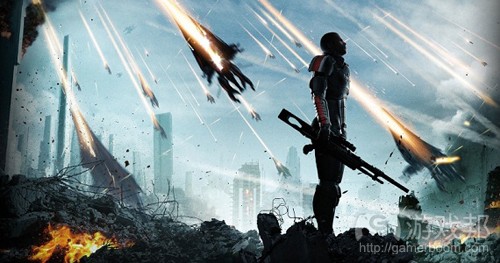
质量效应3(from gamerant.com)
理解
从众人表达期望的言语上来看,我觉得许多玩家并没有理解电子游戏制作所需投入的精力,尽管他们在这三部曲中投入了数百个小时的时间。有人会认为,玩家不需要知道这些。我们观看电影,但是也不知道将图片和音效投放到屏幕过程中所涉的复杂过程。那么,为何玩家需要知道游戏制作过程中的痛苦和汗水呢?
部分电影确实激发粉丝对导演提出更多要求,但这些粉丝往往能够找到其他发泄的途径,比如用Youtube、漫画书甚至小说来表达不同的结局。但是,用来制作视频游戏其他结局的工具相当稀少,所以就导致粉丝向开发者施加压力。撇开资金问题不谈,内容驱动游戏不能拥有无数结局的原因在于:根本不可能制作和测试如此多的内容。
为向玩家解释这种限制,《质量效应》三部曲将游戏体验融入玩家操作的方法看似赋予玩家非凡的能力和创造力,希望通过这种方式自然地让玩家认为游戏是专门为他们设计的。不幸的是,开发者的目标并没有实现。
解析
我将在下文通过快速解析《龙穴历险记》来展示如何设计内容驱动游戏。这款游戏很简单:游戏播放美丽的动画,在预设点会发生某些事情,玩家需要按动按键来做出响应。你可以搜索查看整个游戏的通关视频。
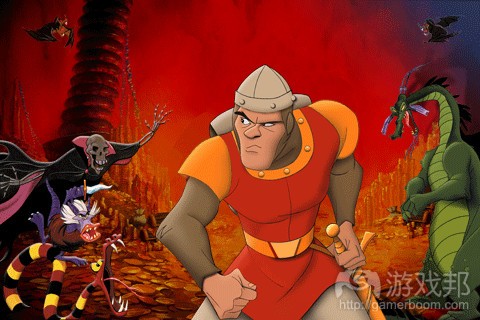
龙穴历险记(from itunes.apple.com)
在整个通关过程中,玩家死亡的次数并不多,因为玩家知道自己在做什么事情。但是,在流畅运行的动画之后,是个等待玩家输入的系统。如果玩家错失了输入的机会,游戏就会朝分支方向发展,玩家就会死亡。如果他们点击了窗口,就可以继续进展下去。

simple_branch(from gamasutra)
不同公司会用不同方式来呈现分支,比如节点、支线和门。但对本文而言,它们从本质上都是相同的。《龙穴历险记》是通过门来创造玩家选择的最简单例子。每个结果都是手工制作完成,游戏设计在所有细节方面都做了规划。
《龙穴历险记》的设计和流程架构可能需要数周的时间,而真正制作内容花了7个月和100万美元。这是款1983年的游戏,在当时的情况下这可是一大笔钱。而这样的大笔投入制作出的却是我们在10分钟左右就能完成的游戏。
测试
对于游戏制作的内容和编写的代码,它们都需要进行测试。当游戏框架和主要机制确定下来时,就要制定测试计划。测试计划制定完成后,就可以制作出测试列表和预期结果。根据这份列表,测试团队可以对游戏做常规检查,确保游戏的表现与预期相同。
上图的测试计划如下图所示:

test_cases(from gamasutra)
从图中可以看出,单个门产生的序列可能会需要8项测试,甚至还可能需要更多。但是,像这样呈现8项测试便足以说明测试是游戏制作中最困难的部分。因此,比《龙穴历险记》更复杂的游戏会出现更多的结局也就不足为奇了。
玩家可能需要经过成百上千次的输入才到达某个点。如果出现漏洞,那么开发者就需要找到重新制作的方法,这样他们就能够理解出现偏差的地方并将其修补。
我需要强调的是,射击机制与门的内容有很大的不同,因为前者是拥有一整套预设规则的内容。当玩家做某些事情的时候(游戏邦注:比如按动开火键),决定所发生事情的是规则而不是内容。所以,测试计划无需将玩家在每个地点按动开火键的情况包括在内。
我在本文描述的门只在大故事点起作用,比如《战争机器》中玩家面临的“路径”类型选择。
扩展
现在,我们知道了单个门所需的细节层次,我们就可以知道如何放大扩展成多个门。在《质量效应》中,每个对话往往都有许多种可能的结果,尤其是与关键角色的对话。玩家所要求的互动与《龙穴历险记》中的动画窗口系统大为不同,但是其潜在系统却极为相似:
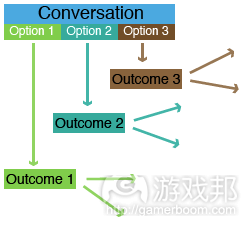
complicated_branch(from gamasutra)
现在,我们面对的情况是,每个对话有3种可能的结果,每个结果又有两个子结果,使对话产生的独特路径达到6条。根据设计的需要,游戏中有上百个对话。我们根本无法创造出这么多各不相同的门。所以,我们创造了许多最终路径相同的结果:
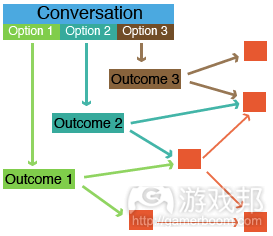
branch_paths(from gamasutra)
你会发现,通过使用这个系统,玩家无需尝试每个门都能够达到故事结局。
阻塞门
通过制作玩家完成游戏必须通过但可以自由选择通过方式的更大、单一的门,你可以更好地控制可能产生的结果数量:
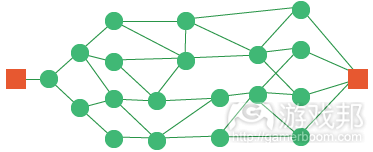
chokepoints(from gamasutra)
在这个例子中,橙色的方框便是阻塞门。
像《质量效应》这样的游戏中设置了多个阻塞门,但是玩家要到达游戏结局却无需经过每个阻塞门。事实上,设计师在游戏中有意制作了大量的路径。但是,每个路径的发展方向都是经过计划和设计的,并针对该路径的过程制作内容。
这种设计方法不仅适用于故事的创作,还可以用在关卡设计和技能树上。《生化奇兵》便是将这种方法用于所有系统的绝佳范例。许多关卡会向你提供必须完成才能前进的目标,但是你可以选择以任意顺序来完成这些目标。
同样,故事感觉像是围绕着玩家进展。是否深入挖掘故事完全取决于你。位于故事之上的层次是你的能力和升级,这些都可以由玩家来做出选择。
游戏一直使用这个系统,直到你碰到Ryan。此时,所有玩家都必须通过一个只有唯一结果的阻塞门。也就是说,他们就别无选择了。我对《生化奇兵》这种做法的抗议就是退出游戏,所以我现在仍不知道游戏最终是何结局。
《质量效应3》显然使玩家产生了类似的反应,尽管这种反应比我的无声抗议更加强烈。在整个三部曲过程中,玩家一直在做他们认为独一无二的决定,游戏根据他们的决定做出响应。
《生化奇兵》所取得的成就令人难以置信,从外在来看能够给人们带来颇多灵感。但是,从逻辑上说,游戏不可能针对每种可能的结果设计结局,希望本文能够让众人明白其中的缘由。
篇目4,探讨故事情节对游戏交互性的影响
作者:Soren Johnson
故事与游戏的联姻一直进行得不太顺利。从一开始,设计师已经把故事写进他们的游戏中,首先是固定的开头,然后顺着叙述,最后到达结局。同时,许多玩家涌进游戏中,因为它们缺少叙述结构;游戏体验是创造故事的过程,不是阅读某个设计师未发表的小说。
这个问题的根源近乎是一个两难的困境——如果玩家的选择真的重要,那么游戏设计师还可能叙述故事吗?如果游戏最重要的元素是它的互动性,那么设计师塞进游戏体验中的所有静止的情节事实上已经取消了玩家的主体性。换句话说,如果游戏有剧透,它还是游戏吗?
除了少数抽象的游戏如《俄罗斯方块》是例外,几乎所有游戏都因剧情元素而受益——深刻的背景、鲜明的氛围、个性的角色、有趣的对话、戏剧性的冲突等等。优秀游戏中的角色和背景甚至能与其他媒体的相媲美,比如《传送门》里的智能电脑GLaDOS或《生化奇兵》中的Rapture。
然而,游戏的真正叙述,即一系列决定情节的事件,正是最难与游戏的本质——交互性保持和谐关系的元素。因此,游戏的叙述无法像在书籍或电影中那样处理,因为在后者中,故事是其他一切元素都必须支持的核心。
想一想Sid Meier是如何把故事元素添加到《Pirates!》中的,这款充满叙述可能性的游戏流行了好一阵子。Sid Meier没有创造一个固定情节和结尾的虚假传说,而是在游戏中填充许多传统海盗故事的片段和情节。根据玩家选择,他可以拯救了失散多年的姐妹、与邪恶的西班牙人一决胜负、成为反叛的海盗、发现埋藏的宝藏、从监狱里逃脱或与长官的女儿喜结连理。到最后,游戏回顾了海盗这一生中的光辉事迹,以及命运的起落。虽然游戏攻略般的情节与专业作品相比,多少是逊色的,但对于游戏的忠实受众,这些事件都有特殊的意义。
然而,并非所有游戏都适合做成一个动态故事发生器。在几乎固定的背景下,有些主题和机制必须好好处理。比如,要给主角配一个邪恶的巫师当对手;战士要有可以战斗的敌人;水管工要有一个他必须拯救的公主(游戏邦注:例如《超级马里奥》)。解决办法是,给玩家提示,而不是命令,让情节自然流露;让玩家自己探索游戏世界,然后在头脑中拼接出完整的故事。
“滚石乐队证明了,歌词是最能唤起共鸣的,即使解释不出原因。”——Paul Evans,滚石乐队专辑指导
确实,故事在游戏中的角色类似于歌词中音乐中的角色。一首歌的词能告诉听者它的情节、情绪和背景,但仍然给听者留下要靠想象来填补的空隙。确实,录音带通常有听不见的歌词,有意使其含意显得模糊。但作家能对小说的文本进行类似的处理吗?另外,爱听歌的人通常也喜欢外语歌。但有多少读者会看另一种语言写成的书?表达意义不是歌词的主要作用;好歌曲总是给听者留下广阔的想象空间。所以,游戏的故事也必须给玩家留下空间。
想象一下益智平台游戏《地狱边缘》的氛围、它的单一基调和简单的音效。这款游戏的故事是围绕一个非常原始的任务展开的——一个男孩寻找他失踪的姐妹;然后根据这个基本任务提出更多问题,如为什么男孩要在一片黑暗神秘的森林里寻找她?为什么他会被蜘蛛怪追赶?攻击他的孩子是什么人?尽管《地狱边缘》完全是线性的,缺少传统的叙述元素——情节、对话和结局,意味着故事必须由玩家自己书写。

atom zombie smasher(from gamasutra)
另一个例子是《原子僵尸粉碎机》。在这款迷你RTS游戏中,玩家要阻止僵尸破坏一个虚构的美国城市Nuevos Aires。这款游戏中充满可笑的小片段,显示市民如何应对僵尸袭击。游戏的结尾更是经典,出现了半机械人El Presidente和AK-47果树的场景,伴随着艾森豪威尔总统的著名的“军工业基地”演讲。
最重要的是,《原子僵尸粉碎机》在不借助传统的、封闭式叙述的情况下,创造了一个能使玩家产生共鸣的世界。那些小插曲事实上是在战斗中随机发生的,要靠玩家的想象来填补空隙。该游戏的设计师Brendon Chung指出,“将信息拼贴在一起的过程很有乐趣,知道这款游戏信任和尊重自己使玩家产生满足感。”对主流玩家来说,这个效果也许有一点儿不和谐,但结果却是,与任何走道射击游戏或充满对话的RPG相比,《原子僵尸粉碎机》更加开放,更加生动。固定情节是破坏玩家沉浸感的大敌。
“祈祷的作用不是影响上帝,而是改变祈祷者自己。”——Soren Kierkegaard
游戏与故事相融合产生的最麻烦的方面就是,文字冒险游戏的可能性。这类游戏除了使玩家可以做出影响很大的决定,与传统小说没有区别。至今为止,因为玩家的选择通常受限于在几个现成的选项,所以这种游戏的潜力还没充分实现。尽管游戏中可能有不止一个结局,但只要结果是有限的,就只说实现了一定程度上不同的交互性,而不说创造了一种新的交互活动。
随着生产成本上升,开发者不可能冒险制作玩家有可能玩不到的游戏片段。因此,无论玩家的选择是什么,交互情节在某些关键时刻必须同步发生。《旧共和国骑士》的情节就是证明这个问题的例子。该游戏的玩家可以选择善良或邪恶的路径,但殊途同归:必须打败超级反派Darth Malak,要么消灭他(善良的路径),要么取代他(邪恶的路径)。即使玩家的道德选择完全相反,Malak的死亡都是必然结局。
静态情节在许多玩家当中产生不和谐的结果,他们可能花数十个小时玩一款RPG,但不会记住游戏的故事,因为其结果与玩家自己的兴趣和选择毫无关系。人们写故事的最终目的是为了分享它对人类的意义。在游戏中,这个目标又意味着什么?大多数故事的核心元素是角色做出的选择;游戏的核心是玩家做出的选择。因此赋予游戏意义的必须是玩家自己做出的选择。在叙述故事的情况下,游戏还能保持玩家选择的重要性吗?
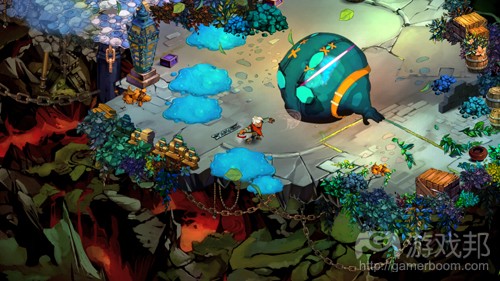
Bastion(from gameinformer.com)
动作RPG《魔幻堡垒》成功地解决了这个难题。这款游戏叙述了神秘“灾难”将世界毁灭的故事。随着游戏进行,玩家会渐渐得知为什么引起灾难的武器会被制造出来,当使用武器时会发生什么事。在游戏的结尾,玩家必须选择倒转时间来阻止灾难降临,或者将幸存者疏散到安全的地方,重新开始。
这个选择是有趣的地方出现在玩家做出选择后——几乎什么事也没有发生。游戏只用一个画面显示玩家选择的结果,然后就这么结束了。设计师没有假装他们给了玩家做决定的真正权威,相反地,这个选择几乎成为反映玩家自己本性的思考。你会选择撤销自己最大的错误,还是作为新人继续前进?
在《魔幻堡垒》中,玩家通过做决定的行为了解自己,而不是通过看一些设计师认为应该是结果的剧情。在《行尸走肉》中,设计师让玩家比较自己的选择与他人的选择,然后提供相应的反馈,从而突出玩家选择。这款游戏通过显示个人选择与集体利益相符或相背,与《魔幻堡垒》的结果类似,反映了玩家自己的人格。
纯专注于设计师的情节选择的游戏忽视了游戏最重要的部分——玩家。在游戏中加入一个故事,无论它有多少深度,事实上推动游戏进展的力量,也是一种简单的做法。游戏必须给玩家留下空间,不只是在规则、机制和系统中,还有在故事中。
篇目5,设计师应巧用菜单传达游戏故事情境
作者:Declan Kolakowski
在此我们说的是游戏中的菜单,而非餐厅菜单。多数游戏设计师在设计过程中并没有对其给予足够的考虑(如果他们就职于大型工作室,很可能就会将菜单设计的失败照片于糟糕的UI美术人员)。游戏菜单已经成为设计过程中的一个败笔,因为游戏开发者将它们的主要目的和主要设计标准完全弄错了。
多数菜单设计的一个主要原则是:实用性。通常这可以理解为非干扰性,极易主义风格,与你所玩的游戏没有任何关系,或者无法突显游戏的个性。
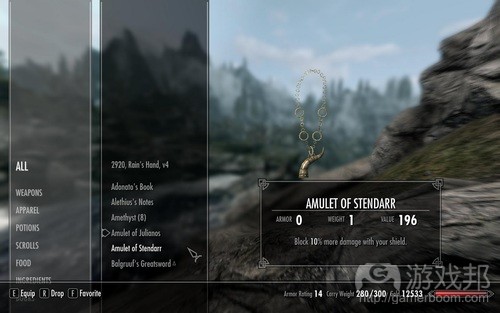
skyrim menu(from gamasutra)
(无趣,无趣。《天际》的菜单设计是最大的反例之一。这种美观而流畅的界面并不能准确传达蔓延游戏其他部分的中世纪哥特风格。)
回想一下你这一生中与多数游戏的首次互动情景。多数时候这一体验始于平铺在中间的菜单(如果设计师觉得这种设计不妥,就会将其设为右对齐方式),其中包括的文字有:新游戏、载入游戏/继续游戏、选项。其中也有一些背景图片或动画。如果你拣出一款UI设计非常刺激的游戏,之后再选择不同的子菜单就可能更改背景图片,甚至是动画。
在相信被多数游戏设计师所遗弃的游戏菜单是最糟糕的设计之一。原因是?因为多数游戏设计师与游戏的互动并不全面。我的许多同行就曾表示,他们并不认为“玩法”开始前的菜单互动是关键的游戏体验环节之一。多数人认为菜单功能只是一种中立的导管,将玩家引向更为传统的体验,这真是一个悲剧,因为我们实际上可以在菜单上多下点功夫,强化游戏设计、主题和故事。
让我们看看Suda51的古怪游戏《Killer7》,它在菜单设计上比之前提到的《天际》好一点。这是富有意义的菜单设计的绝佳例子之一。虽然它并不完美,并且仍然具有多数游戏所犯的一些“标准”通病,但至少能够以一种原创方式传送这些标准设计。玩家初次载入游戏时,会看到普通的CAPCOM/GRASSHOPPER的公司logo,但这些名称却伴随着游戏中主要敌人——Heaven Smiles发出的哈哈大笑,之后就是一声枪击以及暴力的血迹溅在每个logo之上。之后就是一个相当平凡的“按下开始”的按钮出现在新游戏/继续游戏/载入游戏之后。但是,这些字幕被压缩得几乎难以辩认——需要指出的是,《Killer7》中的多数内容是荒诞的游戏玩法体验及其执行方式,所以使用这种压缩字幕会仅能迫使玩家去看一次,这意味着玩家应该早已熟悉这些内容,这至少是个有趣的命题,因为它令玩家按压新游戏时产生对自己所做事情的新看法。随着玩家在这个列表中选择不同的选项,出现在屏幕上的字幕也开始拉伸——这是另一个几乎令人无法阅读的极端。简单的文本转换可以产生一些有趣的暗示,并提升通用准则的新意,令其更具趣味性。
之后玩家会进入一个任务选择画面,其中展现的是80年代的纪录存档卡片飘浮在空中,其背景是一些无名之人的剪影——这就是你的任务目标。在任务卡上是一个单选框,其中有一个块状的激光瞄准器从玩家所在区域射出,就像在第一人称射击模式一样。
玩家最初的唯一选择就是接受任务并继续前进。但是,之后该画面会动态更新,将你已经消灭的目标以暗色置于前景中,仔细看会发现他们已经受伤和被打败了。所有这些元素都能立即传达《Killer7》的游戏基调——即90年代初的职业杀手。
玩家从这个菜单中接受任务卡。摁压接受按钮时,就会听到另一声枪响——没错,《Killer7》就是让人们通过开枪来接受任务,此时画面会快速切换,出现一个红外线指向同个目标的剪影,其间伴随着粗糙的响铃声。玩家就必须将红外线定位到该人影的身体,并再次开枪。最后就会再次听到猛烈的重击声,该人影被炸裂成血肉模糊的颗粒,而后就响起汽车或货运号角的声音,并转向震聋发聩的巨响,该画面就会被解释这一游戏主题的日语解说文字所代替。
《Killer7》说明即使是在选择任务的基本程序中,交互性也仍然十分重要。玩家被迫查看、瞄准和开枪。他们每时每刻都要面对自己最终要进入的虚构游戏世界。这是一个充斥安静和嘈杂,压缩和扩展,象征和位置这些极端的偏执狂世界。
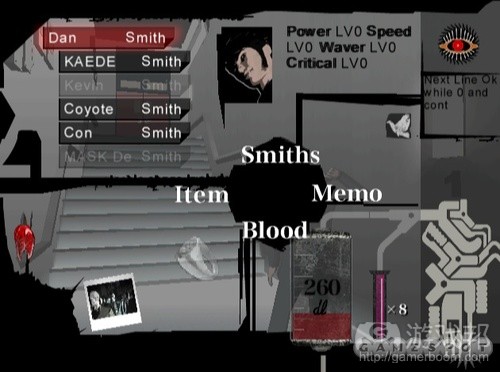
killer7 pause menu(from gamasutra)
《Killer7》中的“暂停菜单”有一个非常有趣和新颖,并且能够加强游戏世界的虚构和故事性的美术设计。这个图片中有许多能够说明该菜单是针对虚构故事量身订做的元素——红色血袋、呈现出尖锐轮廓的道具等等,但在此文我将只挑选一者来讨论。
该图右角落中的眼睛显示玩家的身体状况,如果这个眼睛越来越紧闭着,玩家所剩命值就越少——这与《Killer7》关于第三只眼、启蒙和眼线的虚构故事在概念上十分一致,并再次呼应了上文所讨论的最初开幕画面中的激光瞄准器元素。多数游戏是以绿色或红色命值条来显示玩家身体状态,从右到右减少则说明玩家命值下降,这种设计毫无新意可言。你可以由此看出为何这种自定义设计如此强大。
最后需要指出的是《Killer7》中的保存和载入系统拥有合理的故事情境。所有的保存和载入文件都通过与记录监督磁带的互动,呈现在特定房间的电视屏幕上。这种做法类似于《Fahrenheit 451》中那种全民受到电视监督,大家的一举一动皆会被记录下来,令玩家产生一种自己的行动也在记录之列这种感觉。玩家可以通过一个电报文本风格的菜单系统访问保存和载入文件,这种设计再次传达了游戏背后的主要理念。
从更广泛的层面来看,菜单的一体化设计还代表一种抹煞以整体眼光看待游戏,以及游戏交互机制决定游戏世界的理念。“标准”的菜单在游戏行业中甚为普遍,以至于我们不再去设想新游戏和载入游戏方式。从游戏故事来看,这两个操作不过是一个易用性的问题。当许多设计师想到自己最容易马上接受的游戏时,首先就是这类游戏要有一个明确的开始按钮,如果这是一款玩家令角色取得进展的游戏,那就要有一个容易使用的保存/载入选项。这一切都可以通过标准菜单列表的平庸的中立性来实现。
考虑到多数游戏的虚构情境及其暗示体验时,载入游戏的操作就呈现出内在的奇异性。仔细追究,就会发现即使是“开始游戏”的操作也很荒唐。游戏似乎喜欢采用叙事形式,但为什么我们要从这里“开始”,为何这是一个“新”游戏。在这之前发生了什么情况?所谓的“新”游戏是什么概念?我们结束了一款游戏,又通过列表选择制作了一个“新”版本的游戏,这难道不是很荒唐吗?
在此我并不打算肤浅地批评交互性的荒唐性。我认识到设计师无法检验每款游戏或每个回合中的经验性的互动和第四堵墙(游戏邦注:这是戏剧术语,在镜框舞台上,一般写实的室内景只有三面墙,沿台口的一面不存在的墙,被视为“第四堵墙”)。但行业对当前菜单设计的接纳导致人们对这些设计层面欠缺思考。这对我们的游戏媒体来说真是有趣的问题,因为它可以增强游戏媒体的故事和执行,但却没人想这么做,或者无法这么做,只是因为大家都甘愿受制于游戏媒体应该呈现的假设形式。
以《刺客信条》为例,这一系列游戏中的虚构故事极其需要情境化的菜单系统。这是一款需要通过电脑探索记忆的游戏。为何不将该电脑终端设置为一个可操作的组件,而不只是一个菜单。想象一下载入游戏时,你首先要做的一件事就是通过电脑终端导航。开启存储模块,将角色插入它们所记得的DNA矩阵中。玩家很快就会融入这个以极有趣方式构成的故事中。但由于设计师接受游戏菜单既定的设计模式,所以他们避开了这些可行的做法。
再次声明,我并非易用性的反对者,每个菜单都不应该一开始就将玩家置于复杂的迷宫中。但UI本身应该成为玩家的一个挑战吗?如果它与你所想传达游戏世界故事相得益彰,那么使用这一设计当然可以带来极大的好处,并且可以令其成为故事的一部分。所以我批评菜单设计以实用性(或易用性)为主要原则时,我实际上是在批评游戏行业对该理念的理解导致许多游戏采用了无趣、毫无灵气和美感的菜单设计。
我在一年前制作了一款名为《Rosemary’s Artery》的游戏,在一堆心脏碎片中隐藏了所有菜单元素。用户在开始游戏或者做出选择之前,必须在这些心脏碎片中找到菜单,这可以让玩家立即感知游戏的基调,即被禁锢于他人的体内,试图从这个血肉牢笼中逃脱的氛围。
总体上说,开发者应该像创造游戏体验一样,尽量将菜单制作得更有艺术性、美观和深度。设计师应该像对待游戏体验的关键内容一样重视菜单。
篇目1,篇目2,篇目3,篇目4,篇目5(本文由游戏邦编译,转载请注明来源,或咨询微信zhengjintiao)
篇目1,The Situation with Video Game Stories
by Mark Filipowich
A former professor of mine once told me that for a story to be a story, it must consist of a character being changed by events. Stories may be layered and make use of a gamut of literary devices and tropes, but everything is built on the foundation of a character being changed by an event.
It is not enough to put an alcoholic in an ambulance with his dying mother or a rogue AI in a law firm run by God or an amnesiac engineer in a haunted sandwich shop. Those aren’t stories; they’re situations. They may be interesting situations with interesting people thinking and saying interesting things, but they’re just situations.
And a situation, this professor stooped to tell us, is not a story. Something has to happen, and someone has to change because of it. A story has transparent motion between a distinct individual and their specific circumstances.
Of course, like most rules of literature, the rule disintegrates upon closer inspection. Kafka’s entire body of work is about people not changing under the reader’s watch; even Hemingway was more interested in his unique brand of musing than in laying out what happened to whom and why it should be important.
But I imagine that this professor of mine was just trying to break down a complicated world into manageable chunks for a new batch of undergraduates. Even if the “character-changed-by-stuff” criteria for the written word is imperfect at least it’s somewhat useful in understanding how literature functions. Games, on the other hand, do not fit this criterion at all.
Game narratives aren’t built on stories. Even the most linear, plot-heavy games focus not on what happens, when, and to whom, but rather everything around the events that help to set them up. The circumstances that make the plot possible are far more interesting in games than the plot itself. If literature is a growth chamber where a character is altered when stimulus is applied, then games are a big open room covered in clues, often occupied by fascinating people and explored by a stranger.
It isn’t just that world-building is more important than creating a plot, as argued by Nick Dinicola on [PopMatters], nor is it that the player must feel responsible for creating movement in the plot—although both are still necessary for the narrative to carry any weight—it is that a game’s situation, not its plot, is at the foundation of video game narrative. By narrative, I mean the sum of plot, world, character, scenes, environments, sets, dialogue exchanges, and anything operating in the mechanical system that could be said to evoke a feeling or thought (including the mechanics themselves).
Not to discount any of the great writing or directing authored in games past, but everything is built on a core situation. A player is dropped into a starting environment and everything is experienced through their exploration, deduction, and play. Even when the player has no authority over the game’s events, at the core the narrative is built on each new bit of atmosphere that the game establishes. Whether it’s a change from the Brecilian Forest to the deep roads, hopping out of a warthog and into a banshee, or just lining up four lines to clean up a once log jammed Tetris board, every mood and atmosphere is framed by a situation.
Think of how most levels begin: there may be a cutscene or even just a brief dissolve that wipes to a new screen, but ultimately a level puts an avatar into a world and leaves the player to explore—even if it is just in one direction.
Even in adventure games, in which the player basically figures out how to move from one conversation or cutscene to the next, the narrative is built on the player moving their avatar or their screen or even just closely examining the elements of the world, until each puzzle is solved. Nothing happens until the player has explored the game enough to understand its context. In a novel, you don’t hear about how the character enters a room, approaching each piece of furniture in every new room just to see what they could do with it and what reasons that it could possibly be there (unless it’s a Henry James novel, amirite?).
Everything from “1-1 MARIO START” to the most dynamic cutscenes just establish context, put the avatar in an open space, hand the controls back to the player, and then leave things unresolved. Even if the resolution of a plot is unaffected by player input, most of the narrative substance (the artwork, music, character design, the effort required to move from A to B, the personal and statistical growth and changes in characters) all happen when the player is just exploring the situation.
It’s why games will never—and should never—reach absolute verisimilitude. Because even while it isn’t natural for a hero to take twenty minutes away from a main quest because they thought they might have seen a neat-looking shark from a coastline or for villagers to greet heroes that barge into their homes or for people to repeat the same speech at every prompt or for enemies to walk and attack in the same patterns or for death to be an annoying setback instead of an absolute state, they facilitate exploration of the enormous situation, which is at the core of video game storytelling.
The plot doesn’t matter as much in games because it doesn’t exist until the player moves it. However, the situation is always there, and in the best games, it’s always interesting. Even in games stripped almost entirely of story like in a Mario game or where it’s irrelevant such as in a World of Warcraft raid or a League of Legends multiplayer match, the situation dictates the thoughts and feelings that become the story.
Being clearly outclassed by an enemy leads to anxiety and desperation, resulting in carefully choosing the location of battle or baiting enemy aggression. Ultimately, exploring the game’s context leads to the story of a glorious come-from-behind victory or a humiliating defeat. The point is that the emotive and rational experience is dictated by what situations the game establishes.
The reason I believe why most players don’t finish games isn’t that games are too challenging or even that players get bored with their games. It’s that games lose their impact after too long a string of unpalatable, limited, or repeated situations. The problem is that as a game nears its conclusion fewer unexplored locations remain, fewer long-term goals need maintenance, and fewer characters are left with unresolved arcs. The more progress that the player makes, the more constrictive the overarching situation becomes.
Essentially, there are fewer big open “rooms” left to explore and flesh out. How many players quit a 40 hour campaign right before the final boss just because it’s the last possible thing that they can do? By the time that the final dungeon opens up and the side quests are all wrapped up, the only situation remaining doesn’t need to be explored to understand: “I will beat the boss, or I will reset until I beat him and get the ‘good’ ending.”
For literature and film, plot is everything. Without moving events that shape (or fail to shape) the characters, there is only setup with no direction. We engage with these stories to see what a person will do and how the things that happen will shape them. But games, at the core, are setup. They create a place to wander and figure out for one’s self. All the story that may happen afterward results from play in an open space, the boundaries and significance of which is understood through experience.
篇目2,Story: What is it really about?
Introduction
Upon hearing the word story, most people probably think of a chain of connected events. For example: “A princess is kidnapped; a brave knight rides to save her; the knight faces a dragon, the knight slays dragon and saves the princess; finally the knight gets half the kingdom and marries the princess”. Most likely, one also thinks of even smaller details as integrated parts of the story; the way in which the princess is kidnapped, how the knight struggles against the dragon, and so on.
This is not the right way to think of stories. The chain of events is just the plot, and it is a device used in order to get the story across to an audience. What really lies at the core of the story are themes, locations, emotions, and so on. Pretty much all stories we have heard in our lives have been plot-based, but this is because this has been pretty much the only way of telling them. Now that we have videogames as a widespread medium this is no longer true. Still, the idea that story equals plot remain strong. It is a common belief that when a game becomes less linear, it is less about the story. I do not think this is true and if we want to advance the storytelling of the medium, this view needs to go.
By the Campfire
Humans have been telling stories for a long, long time, well before the dawn of civilization. These stories were not written down, but spread by being told over and over, never repeated exactly the same way. These kind of “camp fire stories” still remain, traveling from person to person, constantly evolving and changing. Yet, while the way the stories are told change, in a way they still remain the same. Anyone who has ever told a story like this knows that you often never know the exact words. Instead, you know of certain important things the story is supposed to “say”.
It is very common that you change a story like this depending on your audience. If the people listening do not seem impressed by the hero’s strength, you add more details, more events, descriptions and dialog. Your goal when telling the story is not be give an exact replication of how the story was told to you. What you are trying to do is to copy the impact the story had on you and any change you can do in order to accomplish this is a valid one.
The moment you do something like this, you have realized, although perhaps unconsciously, that the essence of the story its not the words that make it up. Instead, the story is about something on a higher level.
Peeling an Onion
When a section of a story is trying to convince the audience how strong a hero is, it is something that exists above the words that make it up. Still, this “strong hero” theme, might not be at the highest level either and simply be a vessel for a yet greater goal. Perhaps it sets up an overarching theme of how even the strong will eventually fall. The levels might not stop even there and eventually the essence of the story might be boiled down to a few essentials. These essentials is what the story is really about. Remove any of these and the structure collapse and the original story is no more.
It is also important to have in mind that some levels might be connected. Something that is at a higher level might not manage to stand on its own. A certain part of the story might be about the hero overcoming overwhelming odds and is meant to provoke sympathy. At the same time it is about the hero being subjected to torture and treated very badly by some people. If you remove the torture part, then what you have left is only two very fuzzy themes and not something that alone can build the story. Thus it is not always so that the important pieces of a story are all on the highest level, but they might spread out in a hierarchy. And while this might actually continue down to the very lowest level, it can only do so if removing the part destroys the story. It is not a way to justify that every single detail is essential.
I think most people already have these layers in their mind when thinking up a story, but then along the way give great weight to the details on the lowest level. This is especially harmful when making games, something I will address shortly. First I must go over what I mean by the essence of a story.
What is the Essence?
One might argue that a certain story is not possible to distill into a few high level concepts. It could be argued that a certain scene must be in a very specific way; that one cannot simply describe it as some flimsy themes. I think this happens if one thinks that the themes must be deep, thought provoking, artsy, or whatnot. This is not what I mean with the essence though and it can be any number of things.
For example take the “attack on the village”-scene in the movie Predator, something I am sure few people would call deep, thought-provoking or similar. What are the high level concepts here? Is it just be boiled down to “mindless violence”, “how the civilized world rapes nature” or anything similarly pretentious? Not so. Instead its essence is things like the environment, the oppressing jungle; to have a team of sweaty super-humans storm a village, showing off destruction and gunfighting. At a higher level it is also meant to be fun watching and must keep a certain distance to reality and stay away from certain things (like murdering of innocents) in order to keep the audience entertained.
What I want to show here is that a story does not need to be have some kind of moral lesson, ask an existential question, or whatever deep meaning, at its core. It can be shallow and just for fun. Even so, there is an essence and it is what really matters in the story.
Consider any good book/movie you have ever read/seen. Is it really the lowest level of events and details that made you like it? Was it not the locations it took you to? Was it not the interesting relationship between character? Or the way slowly uncovering a mystery made you feel? I argue that no story, no matter what sort, is not about the exact way in things happen, but about the essence of these events. This is something that is crucial to have in mind in video games, as simply nailing down a few details that satisfy the essence is not enough. A video game is a living, breathing world and the essence needs to be portrayed through the right use of the mechanics (such as gameplay, art, sound, etc).
Stories in Videogames
Actually videogames already use this kind of story telling! For example, first person shooters have not set the exact sequence how people get shot or houses blown up. The thing that matters is that people do get shot and houses do get blown up. Exactly how this happens is not important for the story, only that the essence of the action stays the same.
The same is true for portrayal of environments in most games. It does not matter how the protagonist traverse or interact with it, the designer simply constructs a world and the rest is up to the player. By setting up the mechanics of the game a certain way, the designer then pretty much guarantees that the player will have a specific kind of experience and that the essence is kept intact.
However, this how far it goes in most the games today. Once a videogame gets to trickier parts of the story, lower level details are given more and more importance. When it comes to concepts like love, betrayal and grief, pretty much all current games rely on a specific set of events, a plot, to convey them. No longer does it consider the essence of the story. Instead, it becomes focused on the low-level details. Take God of War as an example. There is no need to have cut-scenes showing how angry and prone to violence Kratos is – the gameplay does this for us. But when it is time to bring up other emotions, like showing the reasons behind his rage, the game resorts to plot-based cut scenes.
This does not have to be the case. I think that just about any essence can be expressed by a virtual world guiding the player using various mechanics. This can be conveyed just as good, or perhaps even better, than what a carefully planned plot is able to. I believe we are already seeing this with deeper themes such as a fear. As has been proved by games like Silent Hill*, over ten years ago, video games can be used to provoke fear in a way that is impossible to do in any other medium. While certain kinds of horror lends itself extremely well to the video game medium, I see no reason why other emotions and themes can not work just as well. There are of course also games like Fallout and Shadow of the Colossus that touch upon other themes without using a plot, giving a glimpse of what could be achieved. However, this is just the tip of an iceberg and videogames as a story telling medium is still far from where it could be.
End thoughts
Abandoning plot and a linear progression does not mean that one is creating a sandbox game. It simply means that one picks out the essence of the story and design a virtual world that delivers just that. I believe that sticking to old fashion cut-scenes is a dead end if we want video game story telling to progress. Instead we need to look at a higher level, figure out the essence of our stories and focus on that. When this way of creating a story reaches into areas previously reserved to films and books, storytelling in game will be a force to truly reckon with.
篇目3,Opinion: The perception of interactivity
Alex Moore
The conclusion of the Mass Effect trilogy has spawned a great deal of chatter on forums and news sites alike, based initially on the online petition requesting extra endings and the growing responses from Bioware and others alike. Kyle’s post here covers one perspective, and with this post I aim to cover something slightly different one. It is not directly about Mass Effect, but instead about how content-driven games are made.
Understanding
It seems to me, from the way the petition is worded, that despite investing hundreds of hours in the trilogy, many gamers don’t understand the logistics involved in creating a video game. It could be argued that they shouldn’t need to – we watch films without knowing all the intricacies involved in getting the image and sound to the screen, so why should gamers need to know about the blood, sweat and tears that go into making games?
While some films do spark huge reactions toward the director from fans, those fans often find other outlets for their reaction, with alternative endings turning up on Youtube or comic strips or even novels. There are rarely the tools made available for alternative endings to be made for video games, which in turn leads to fans putting pressure on developers. Funding issues aside, there’s a big reason why a game driven by content cannot have infinite endings: it’s simply not possible to create and test that much content.
To expand on that statement, the way the Mass Effect trilogy melds the experience to the player’s actions puts a phenomenal sense of power and creation into their hands, and this naturally gives the impression that the game is crafted specifically to them. Unfortunately, it’s not.
Exhibit A
To give an example of how a content-driven game is designed, I’m going to have a quick look at Dragon’s Lair. If you haven’t played it, the premise is very simple: a beautiful animation plays out and, at a pre-defined point, something happens which the player needs to react to with a button press. This is a video of the full game being played all the way through.
The playthrough doesn’t show many of the player deaths because the player knows what they’re doing. But behind the smooth flowing animation is a system that’s waiting for a player input. If the player misses the window of opportunity, the game branches and the player dies. If they hit the window, they progress.
Different companies refer to these as different things – nodes, branches, gates. They’re effectively all the same and, for this post, I’ll stick with the latter. This example is the simplest gate required to create player choice. Each and every sequence has been hand crafted, and the game planned out in intimate detail.
To design Dragon’s Lair and sketch out the flow, it probably took a few weeks, though actually creating the content took seven months and 1 million dollars (source). That was in 1983, so in today’s money that’s a lot more. And all this for a game that can be completed in just over 10 minutes, as shown in the above video.
Testing
As well as creating the content and code, it all needs to be tested. Test plans come later down the development line, when the framework of the game and the main mechanics are close to being locked. Once that happens, it’s possible to create a list of tests and expected results. From here the test team can do regular checks to ensure the game is behaving as intended.
A test plan for the the diagram above might look something like this:
One sequence with a single gate therefore might lead to eight tests. Possibly even more. For now, though, that’s enough to highlight why testing is one of the most difficult parts of making games. It stands to reason therefore that in a game more complicated than Dragon’s Lair there’s going to be far more possible outcomes.
At any one point the player could have done one of a hundred things, let alone the thousands of small inputs they’ve made to get to where they are. If a bug surfaces, the developer then needs to find a way to recreate it so that they can understand what’s going wrong and then, hopefully, fix it.
I should note at this point that something like a shooting mechanic is very different from gated content, because that’s a system that has a set of defined rules. When the player does certain things (such as presses the fire button), the rules determine what happens, not the content. So the test plan doesn’t have to account for pressing the fire button at every possible position the player can get themselves into.
The sort of gates I’m describing here really only come into play at big story points, such as the ‘choose route’ type option presented to the player in Gears of War for instance.
Scaling up
Now we know the level of detail required for a single gate, we should now look at how we cope with multiple gates. In Mass Effect, each conversation often has a few possible outcomes, especially when they’re with key characters. The interaction required by the player is very different from the reaction-heavy animation window system employed by Dragon’s Lair, but the underlying system is very similar:
Suddenly we’re facing a bit of a crisis – one conversation with three possible outcomes, each with just two more attached to them has led to six unique paths. And the game design wants over a hundred conversations… There’s no real way that we can create that many unique gates. So, instead, we create paths that feed back into themselves further down the line:
You’ll notice that by using this system it’s entirely possible that the player won’t have to go through every gate to get to the end – in fact it’s desirably to do this to try and encourage replays.
Choke Points
You can keep even more control over the number of possible outcomes by creating larger, single, gates that the player has to go through to complete the game, but where they’re free to choose whatever route they desire in between:
The orange boxes in this case are choke points.
With a game like Mass Effect, there are multiple choke points, but the entire game is constructed of so many that the player doesn’t have to go through every one to get to the end of the game. In fact, there’s very purposefully a great deal of routes through the game. But every single route has been planned, designed and has had content created for it.
This type of design method isn’t just limited to stories, but can be used for level design or ability trees too. A good example of a game that uses this method for all of these systems is BioShock. Several levels give you objectives that you must complete to ultimately move forward, but you can do those objectives in whatever order you desire.
Equally the story feels to develop around you, the player. It’s up to you whether or not you delve deeper into the myth and seek out the audio diaries, and of course there’s the choice of how to deal with the little sisters. Layered on top of that are you abilities and upgrades, all at your choice.
It works really well, all the way up until the point where you meet Ryan. At that point, all players must go through a single choke point with only one outcome. Thus their choice is removed. My protest with BioShock was simply to stop playing – I still have no idea how it actually ends.
Mass Effect 3 has obviously created a similar reaction, though a much stronger one than my silent protest. Throughout the trilogy, players have been making what they believed were unique decisions, and the games responded accordingly.
The achievement by Bioware is staggering, and from an external perspective very inspirational. Logistically, though, there could never be enough endings to satisfy every possible outcome, and hopefully this post has gone some way to showing why not.
Disclaimer: I don’t work for EA or Bioware, and wasn’t involved in the creation of Mass Effect at any point.
篇目4,Should games have stories?
By Soren Johnson
Stories and games have always had an uneasy marriage. From the beginning, designers have written stories into their games, giving the player a fixed beginning, a narrative path to follow, and a preset ending. At the same time, many players flocked to games because of their lack of narrative structure; a game experience is a chance to create a story, not to submit oneself to a designer’s unpublished novel.
At the root of this problem is an almost theological dilemma – can a game designer tell a story if the player’s choices actually matter? If the most important element of a game is its interactivity, then every static plot point a designer crams into the experience takes away from the centrality of the player. Put another way, if a game has a spoiler, is it really still a game?
To be clear, with the exception of a few abstract game like Tetris, almost all games benefit from story elements – an interesting setting, a distinctive tone, memorable characters, engaging dialogue, dramatic conflict, and so on. The best games have characters and settings that rival those of any other media – consider GLaDOS from Portal or Rapture from BioShock.
However, the actual narrative of a game – meaning the series of events which determines the plot – is the hardest element to reconcile with the essential interactivity of games. For this reason, narrative cannot be handled as it is with books or movies, in which the story is the core element that everything else must support.
Consider how Sid Meier added story elements to Pirates!, a game set in a period dripping with narrative possibilities. Instead of creating a single swashbuckling tale, with fixed plot points and a preset ending, he filled the game with the bits and pieces of a traditional pirate story. Depending on his choices, the player can rescue a long-lost sister, duel an evil Spaniard, survive a treasonous mutiny, discover buried treasure, escape from prison, and woo the governor’s daughter. Upon retirement, the game displays the notable events of the pirate’s life, chronicling the ebbs and flows of fortune. While the plot of a single playthrough would suffer in comparison to that of an authored work, the events have a special meaning for its intimate audience of one.
However, not every game is well-suited to become a dynamic story generator; some themes and mechanics are best handled against a mostly fixed backdrop. A hero needs an evil wizard to slay; a soldier needs an enemy to fight; and a plumber needs a princess to rescue. The solution is to use a light touch, to suggest rather than to dictate, to let go of the very idea of plot. Let the player explore the world and then assemble the final story in her own head.
“The Rolling Stones confirmed that lyrics are most evocative when just short of indecipherable.” – Paul Evans, The Rolling Stone Album Guide
Indeed, the role of narrative in games is more akin to the role of lyrics in music. A song’s words give the piece its context, its mood, and its setting while still leaving a suggestive gap for the listener’s imagination. Indeed, recordings often have lyrics that are inaudible, leaving the meaning intentionally obtuse. Would a writer ever do the same with the text of a novel? Further, listeners often enjoy songs in a foreign language. How many readers pick up a book in a different tongue? The exact meaning of a lyric is not its primary role; great songs leave room – often, a great deal of room – for the listener. So too must a game’s narrative leave room for the player.
Consider LIMBO, the puzzle platformer noted for its atmosphere, with its monochromatic tone and minimalist audio. The game’s story revolves around a very primal quest – a boy’s search for his missing sister – and raises more questions than it answers. Why is the boy looking for her in a dark, mysterious forest? Why is he chased by a monstrous spider? Who are the kids trying to attack him? Although LIMBO is completely linear, the lack of a traditional narrative – with a plot and dialogue and answers – means the story must be written by the player.
Another example is Atom Zombie Smasher, the micro-RTS about a patchwork military trying to stop a zombie apocalypse in the fictional South American city of Nuevos Aires. The game is peppered with gonzo vignettes (“Esposito scores the winning goal. Minutes later, he’s eaten alive.”), showing how the citizens handle the onslaught. The epilogue is a masterpiece of bizarro narrative, with scenes of a cyborg El Presidente and AK-47 fruit trees backed by President Eisenhower’s famous “military-industrial complex” speech.
Most importantly, Atom Zombie Smasher creates an evocative world without a traditional, canned narrative; the vignettes, in fact, are delivered at random during the campaign, letting the player’s imagination fill in the gaps. Brendon Chung, the game’s designer, points out that “piecing information together is fun and knowing the work trusts and respects you is satisfying.” The effect is perhaps a bit too jarring for a mainstream audience, but the result is that Atom Zombie Smasher feels so much more open and alive than any pre-digested corridor shooter or bloated, dialogue-heavy RPG. A fixed plot is the enemy of player engagement.
“The function of prayer is not to influence God, but rather to change the nature of the one who prays.” – Soren Kierkegaard
One of the most tantalizing aspects of mixing video games and narrative is the possibility of interactive fiction, in which the player gets to make the big decisions in an otherwise traditional story. So far, this potential is unrealized as the player’s choices are usually limited to selecting between a few preset branches. Although there may be more than one ending, as long as the outcomes are finite, interactivity only promises a difference in degree, not in kind.
As the cost of production rises, developers cannot risk creating sections of a game without guaranteeing that the player will experience them. Thus, regardless of player choice, the interactive storyline must synchronize at key points. The plot of Knights of the Old Republic exemplifies this problem. The player can pursue a good or evil path, but both paths lead to the same place; the villain Darth Malak must be defeated, either to stop him (the good path) or to usurp him (the evil path). Even with completely divergent ethical paths, no outcome is possible without Malak’s death.
These static plotlines lead to a jarring disconnect for many players, who might spend tens of hours playing an RPG but have no lasting memory of the story because it has nothing to do with the player’s own interests or choices. Ultimately, people write stories to share what it means to be human. What does that goal mean in the context of games? The core element of most stories is the choices made by the characters; the core of games is the choices made by the players. Thus, what makes games meaningful must be the choices made by the players themselves. Can a game ever tell a specific story and still preserve the importance of player choice?
The action RPG Bastion successfully tackles this dilemma. The game tells the story of a mysterious “Calamity” that shattered the world into pieces. As the player progresses, he learns of why the weapon which caused the disaster was created and what went wrong when it was triggered. At the game’s conclusion, the player must choose between either reversing time to possibly prevent the Calamity or to evacuate the survivors to a safer place and a new start.
What is most interesting about this decision is what happens next – which is that almost nothing happens. The game simply ends, with only a single image reflecting the player’s choice. The designers do not pretend that they are giving the player actual agency with this decision. Instead, the choice becomes almost meditative, a simple reflection of the player’s own nature. Would you undo your greatest mistake, or would you move forward as a new person?
In Bastion, the player learns about herself through the act of making a choice, not from seeing what some designer thinks should be the result. In The Walking Dead, the designers emphasize player choice by providing feedback on how one’s choices compare with those of other players. These results similarly illuminate the player’s own personality by showing which of his decisions go with or go against society at large.
Games that focus purely on the designer’s plot choices ignore that the most important part of a game is the player. Putting a story, regardless of its power or depth, inside a game is actually a crutch, an easy way out that stunts the advancement of our form. Games must leave room for the player, not just within the rules and the mechanics and the systems, but within the story as well.
篇目5,Thematic Storytelling Through Menu Design
by Declan Kolakowski
The following blog post, unless otherwise noted, was written by a member of Gamasutra’s community.
The thoughts and opinions expressed are those of the writer and not Gamasutra or its parent company.
Menus. No! Not restaurant menus, menus in games, you know? Those things that most designers give about as much thought to as their dirty laundry during the design process (and if they work in a bigger studio, palm the design of off onto a poor UI artist)? Those things. Game menus have become the black sheep of the design process because we, as makers of games, have got their primary purpose and our primary criterion for their design completely wrong!
Most menus are designed with one major principle; practicality. Usually this translates into noninvasive, minimalist style affairs, a positive yawn-o-rama devoid of any personality or relationship with the actually game you are playing.
Dull, dull dull. Skyrim: one of the worst offenders. This beautifully streamlined interface doesn’t exactly communicate the medieval gothic that pervades the rest of the game.
Think back to the first interactable moment you have had with most games over the course of your life. Almost always this experience will start with a menu laid out as a centred (or if the designers were feeling really edgy, right-aligned) list comprising the words: NEW GAME, LOAD GAME/CONTINUE, OPTIONS. And some sort of background image or animation. If you’ve picked up a game in which the UI designer was a real thrill seeker then selecting different sub-menus might change the background image, or even animate it!
In the department of missed opportunities I believe the abandonment of games menus by most games designers is one of the worst. And the reason for this? Because most games designers don’t really approach the experience of interacting with a game holistically. Speaking to many of my peers they don’t consider the interaction with a menu before “gameplay” begins to be part of he essential game experience. Most believe that menus functions as a kind of neutral conduit through which users travel into their more traditional experiences and this is tragic because there is SO much you can do with a menu that re-inforces the design, theme and storytelling of your game.
Let’s look at a game that does this a bit better than our aforementioned Skyrim; Suda51′s bizarre epic, Killer7. This game is one of best examples of meaningful menu design. Although it’s not perfect and still has some standard “menuing” that many games suffer from, these standards are delivered in at least in an original style. When first loading it up the player will be treated to the run of the mill CAPCOM / GRASSHOPPER title cards, however each of these is underscored by the giggling laughs of KIller7′s main enemy – the Heaven Smiles – followed by a gun shot synced with a violent red color palette swap on each logo throwing them into dramatic noir-style lighting. Then a rather (formally) uninspired Press Start to begin screen followed is followed by the NEW GAME / CONTINUE / LOAD GAME shtick. However, these titles are compressed as to be almost unreadable – it’s arguable that much of KIller7′s fiction is about the absurdity of the game play experience and its execution, so the use of these compressed titles forcing the player to interrogate ( and actually read) them for once, signs which they should be so familiar with, is at least a somewhat interesting statement as it forces a new perception of what one is actually doing when they press new game. As different options are selected from this list the titles spring out across the screen become grossly stretched – the opposite extreme – and equally hard to read. A simple transformation of text can have some interesting implications then and reinvigorate a tired formula but things are about to get a lot more interesting.
Next the player is taken to a mission select screen presented in the style of 80′s documentary store archive cards, floating passively in space with an anonymous silhouette behind it – the target for your mission. In the mission card is a single check box into which a glowing blocky laser sight points from where the player is seated – as if in first-person shooter mode (another reference possibly to the point, shoot, select arcade games of the early 90′s).
When first starting the player’s only option is to accept and mission and proceed. However, later on this screen updates dynamically, placing the targets you have eliminated in cell-shaded color in the foreground, staring off, maimed and defeated. All of these elements immediately communicate the sense of the Killer7; contract assassins of the early 90′s – in deep with the end of the political machinations of the Reagan administration.
The player literally plays accepting the mission card from this menu. On pressing accept another visceral gun shot is heard – yes, the Killer7 are the type of people who accept a mission by firing at it – shifting the screen again violently to the same target silhouette this time with a glowing red laser that the player can control tracing the line of the target’s body, underscored by an abrasive ringing sound. You must then position the laser over a body part of the shadow and fire again. A final violent bang issues forth and the body disintegrates into a collection of red particles, the sound of a car or freight horn sampled and shifted to a deafening degree blares out, and the figure is replaced by a japanese kanji stating the theme for this level made from the same blood red spots that disintegrated them on your shot.
Here Killer7 offers a thoughtful look at how interactivity is important even in the basic procedure of selecting a mission. The player is forced to look, aim and fire. They are confronted at every moment by the fiction of the game world which they will, and arguably already have, stepped into. A world of paranoia, extremes of quiet and loud, compression and expansion, symbol and lie.
Killer7′s innovative pause screen menu.
Similarly Killer7′s “pause menu” has a very interesting and original aesthetic that reinforces the fiction and story of the game world. There are numerous examples in this image of the tailoring of menu for fiction – the blood bag styled blood counter, items displayed on silhouetted spikes, polaroids of targets yet to be found – but I will focus on one for the purposes of this post.
The eye in top right hand corner indicates the player’s health. The closer it is to being closed the less health the player has – conceptually consistent with Killer7′s fiction about the third eye, enlightenment and lines of sight, echoed again in the laser sights of the original opening screens discussed above. Compare that to how most games indicate health; a green or red bar that moves from right to left as health decreases and has absolutely nothing original to say. You can see why these sorts of customisations can be so powerful.
A final note about Killer7 is its save and load system which has a proper fictional context for it. All save and load files work through interaction with recorded surveillance tapes that appear on TV’s in specific rooms. A nod to the nightmarish surveillance state in the style of Fahrenheit 451, in which citizens are spied on through their televisions, a state that records every move one makes, so closely that the player’s very being can be reconstituted at the point they were last recorded. Save and load files are accessed through a tele-text style menu system that again fundamentally communicates the thematic ideas behind the game.
On a wider level the homogenisation of the menu also represents a kind of effacement of thought about games as whole and how all their interactable mechanics dictate the game world. The “standard” menu has become so accepted in the medium that we no longer think about the assumptions that spring from new game and load game. In terms of storytelling these two actions have become nothing more than a usability convenience. When many designers think about games they accept almost immediately that their game will have an unambiguous start button, and if its a game where the player makes character progress, there will be an easily accessed save/load option. All mediated through the meretricious neutrality of a standard menu list.
The act of loading a game is inherently bizarre when you consider the fictional context of most games and their implied experience. Even the act of starting is completely ridiculous when examined closely. Games seem to be fond of in medias res story telling but why do we “start” here, why is this a “new” game. What happened before now? What about the notion of “new”? Isn’t it fundamentally absurd that we can finish a game and somehow make a “new” version of it just by selecting from a list.
My point is not meant to be a surface level, clever-clogs critique of the absurdities of interaction, I realise that designers can’t somehow examine the nature of experiential interaction and the fourth wall in every game or play session. But the tacit acceptance of menu design as it is today is leading to a lack of thought about these aspects of design. These are really interesting questions about our medium, that could add so much to the story and execution of the video-game medium but no one wants to, or perhaps simply can’t, engage with because of assumptions about the form the medium should take.
Think of Assassin’s Creed. A series of games, the fiction of which is crying out for a fictionalised menu system. A game in which you explore memories through a computer. Why not make that computer terminal an operable component instead of a menu. Imagine loading up the game and the first thing you have to do is navigate through a computer terminal. Start up the memory module to plug your character into their matrix of remembered DNA. Immediately the player is engaged in a way that builds the fiction of a universe in a very interesting way. But because of designer’s acceptance of how game menus “should” be, they shy away from these possibilities.
A quick disclaimer; I am not an enemy of usability, every menu should not be labyrinthine affair intended to put the player off from the start. But the idea that a UI should itself be a challenge to a player? If that’s consistent with the fiction of the game world you are trying to communicate then surely it would be hugely beneficial to use that play time to your advantage as piece of story telling. So when I critique the primary tenent of menu design as being practicality (or usability) I am critiquing a particularly interpretation of this that has become widespread in the game’s industry; that translates these worlds in the boredom inducing, uninspired minimal aesthetic that many games’ menus use.
In games I’ve developed in the past I’ve tried to practice what I preach. I made a game about a year ago called Rosemary’s Artery in which I cloaked all the menu elements in claustrophobic cuttings of a heart. The user, before they could select any options or begin the game then had to rake away these crowding fragments of heart to find the menu. This made the player immediately get a sense of the game’s tone, the crushing atmosphere of being interned in another’s body, trying to escape a prison of flesh.
More recently when developing a game called Really Good Paths, I’m hoping to create a fully fledged mini-game out of the start menu, through a paired down side-scrolling version of the central experience in which you have to play and catch the UI element you want to choose.
In essence. Go wild. Question your medium. And make your menus as artistic, beautiful and thought provoking as the experiences that you want to craft. More designers need to treat the menu as an essential part of the game experience.







































 闽公网安备35020302001549号
闽公网安备35020302001549号